

 This factory tour first appeared in September 2022 on fairaudio.de. By request of the factory and permission of the author, it is hereby syndicated from the German original to reach a broader English audience. Ed.
This factory tour first appeared in September 2022 on fairaudio.de. By request of the factory and permission of the author, it is hereby syndicated from the German original to reach a broader English audience. Ed.
Quite a few things improve with age. Take a luxe bottle of Barolo; an unhurriedly aged parmigiano reggiano; a slab of dry-aged ribeye. They all get better. So does that sportscar from Zuffenhausen whose three-digit type designator should be familiar worldwide. Even seemingly mundane things like my electrical toothbrush have made improvements over the years which I never foresaw. Another such member in this club is Friedrich Schäfer – or better, the amps he's been building for over 40 years now.
 A still nude ASR Emitter II sand typical acrylic housing. The power supplies live in separate casings.
A still nude ASR Emitter II sand typical acrylic housing. The power supplies live in separate casings.
It took little arm twisting to visit ASR Audio Systeme in the Hessian Herborn, an idyllic township by the river Dill known for its picturesque half-timbered houses. I wanted to learn more about where and how Schäfer and team develop then fabricate their globally renowned integrated amplifiers and phono stages with signature smoked-acrylic casings. The trip through the Sauerland and Westerwald's foothills is an experience already, especially if you're fond of romantically hilly wild terrain. The weather forecast promises a fairly warm sunny summer's day. As I arrive in the district of Seelbach still a bit out of my way, the thermometer shows a whopping 25°. Yet it's still pleasantly cool inside ASR's company building, not least due to the fact that the firm moved into a decommissioned army barrack. Its walls are most likely bulletproof so thick and clearly good insulators.
 Nearly the entire ASR team, with company boss Friedrich Schäfer front center.
Nearly the entire ASR team, with company boss Friedrich Schäfer front center.
There I'm greeted by founder and sole proprietor Friedrich Schäfer. Born in 1956, he still has a firm handshake and thankfully provides me with a decent cuppa to kick off our conversation. We naturally are on about the history of ASR Audio Systeme. After 42 years in the biz, there's lots to cover. I learn that Schäfer is born in Herborn and during the 1980s studies business and economics in nearby Giessen. From an early age on he grows enthusiastic about tech in general and electronics in particular. But first comes a passion for photography. Participation in the renowned Jugend Forscht competition follows where our student nets a respectable third place for an automatic processor. When at university he crosses paths with former classmate Michael Rompf, both already share a passion for fine hifi. Starting a joint venture hopes to put coins into their lean pockets. Initially Schäfer + Romp deal in loudspeaker production. Their top model sells for what then is a stout DM6'000. In 1981 their first amplifier follows, the Basis Phono. In 1982 the first integrated amplifier launches. It's first in what will become a long line of so-called Emitters. By 1993 the Emitter II follows. A review in one of the era's hip stereo magazines immediately outs a number of popular top competitors as sonic old-timers. It insures that from now on Schäfer + Rompf focus on amplifier designs. Like the Emitter, the Basis packs a long-legged future that walks proud to this day. Over time both platforms undergo a large number of evolutionary steps which make them the reliable and mature hifi machines they are today. Amplifier for life is, as Friedrich Schäfer confirms, to be taken literal.
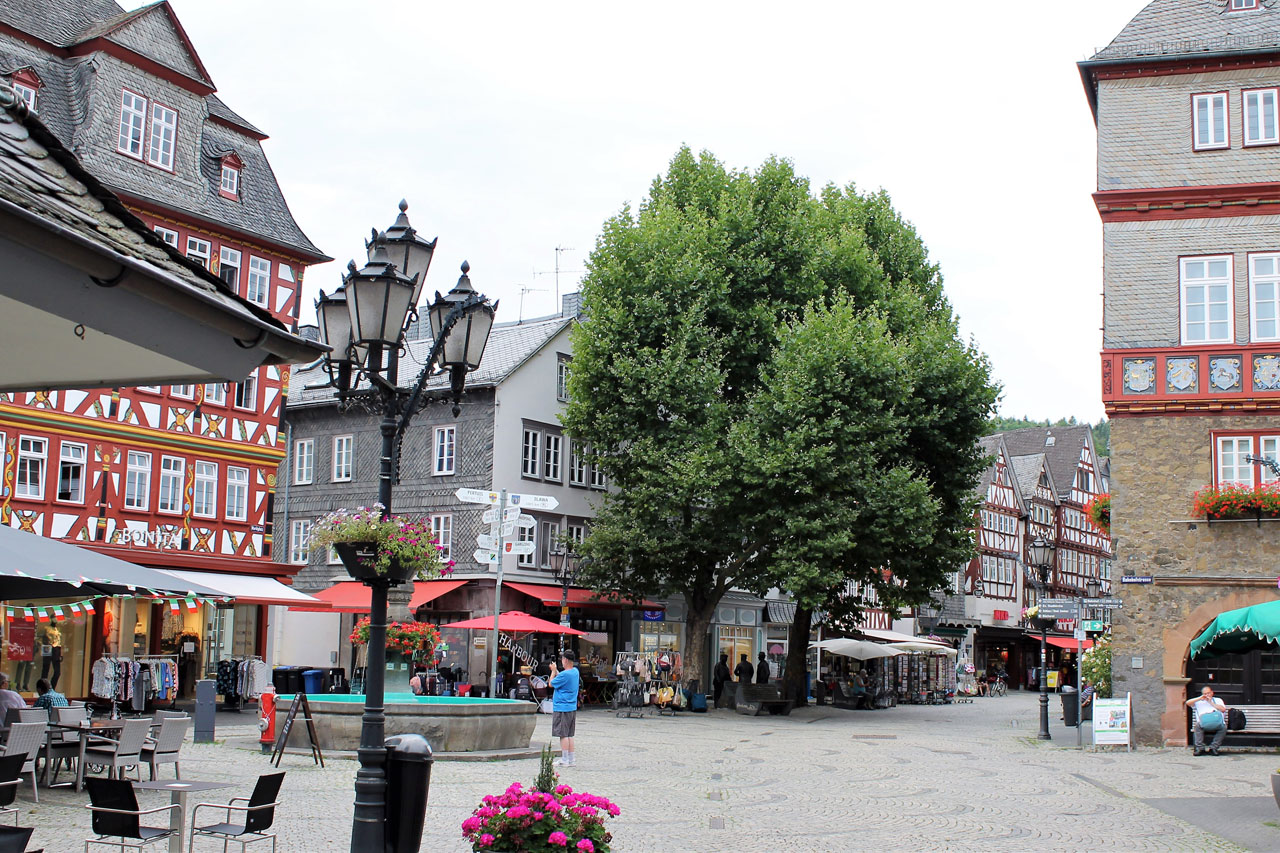 The central marketplace of Herborn, a 20'000 strong community and home to ASR Audio Systeme.
The central marketplace of Herborn, a 20'000 strong community and home to ASR Audio Systeme.
Although an economic success, the collaboration with Rompf ends in 1994 because Michael turns to other projects. Schäfer promptly decides to run the company on his own. By 1995 Schäfer + Rompf officially becomes ASR Audio Systeme Friedrich Schäfer. Both its ASR Emitter I and II remain in today's catalogue. Their power data are 2 x 140 watts for the Emitter I, 2 x 280 watts for the big brother, each into 8Ω. With Friedrich Schäfer one can be sure of rather conservative figures; and that his amps are extremely stable into real-world loads as suggested not least by near power doubling into 4Ω. Compared to earlier incarnations, they now look more elegant and modern but are still easily identified as typical Emitters. Beneath the acrylic however, there's always ongoing development to push performance ever further. Schäfer keeps meticulous records of all changes which anyone can view on his website. In addition to the integrated Emitter amplifiers, the phono models are the Mini Basis and Basis, all constant members of the Herborn catalogue. Like the integrated, they too undergo constant evolution; with amazingly audible effect on the sound as I determined when testing the Basis Exclusive HV. What is less well known is that ASR Audio Systeme also offer power cords. Say hello to the Magic Cord supplied with the ASR amplifiers; and the Active Magic Cord. The latter integrates active DC voltage suppression and a low-loss low-Ω mains filter against HF interference. Since this technology already integrates in the power supplies of ASR, the Active Magic Cord should be of particular interest to owners of decks from other brands.
 All specified tolerances are precisely tracked. Here Niko Müller measures the circuit board for a Mini Basis Exclusive.
All specified tolerances are precisely tracked. Here Niko Müller measures the circuit board for a Mini Basis Exclusive.
The question often arises why ASR don't do classic separates. That's easy. Friedrich Schäfer sees no point in distributing these functions across two separate housings which must add additional buffers and long cable. On the other hand, he views separate power supplies as having a clear advantage. It's why fat transformers are banished to separate housings. This form of apartheid is an essential part of the company's design philosophy. In the case of an Emitter II Exclusive with battery power supply, this can mean that in addition to the actual amp, three additional and by no means lightweight boxes must stow away in your listening den. This was shown in our review of the Emitter II Exclusive. In addition to external battery power, there are two more separate casings, each containing a duo of large Philbert cut-core transformers supplying one amplifier channel's 10 output Mosfets.
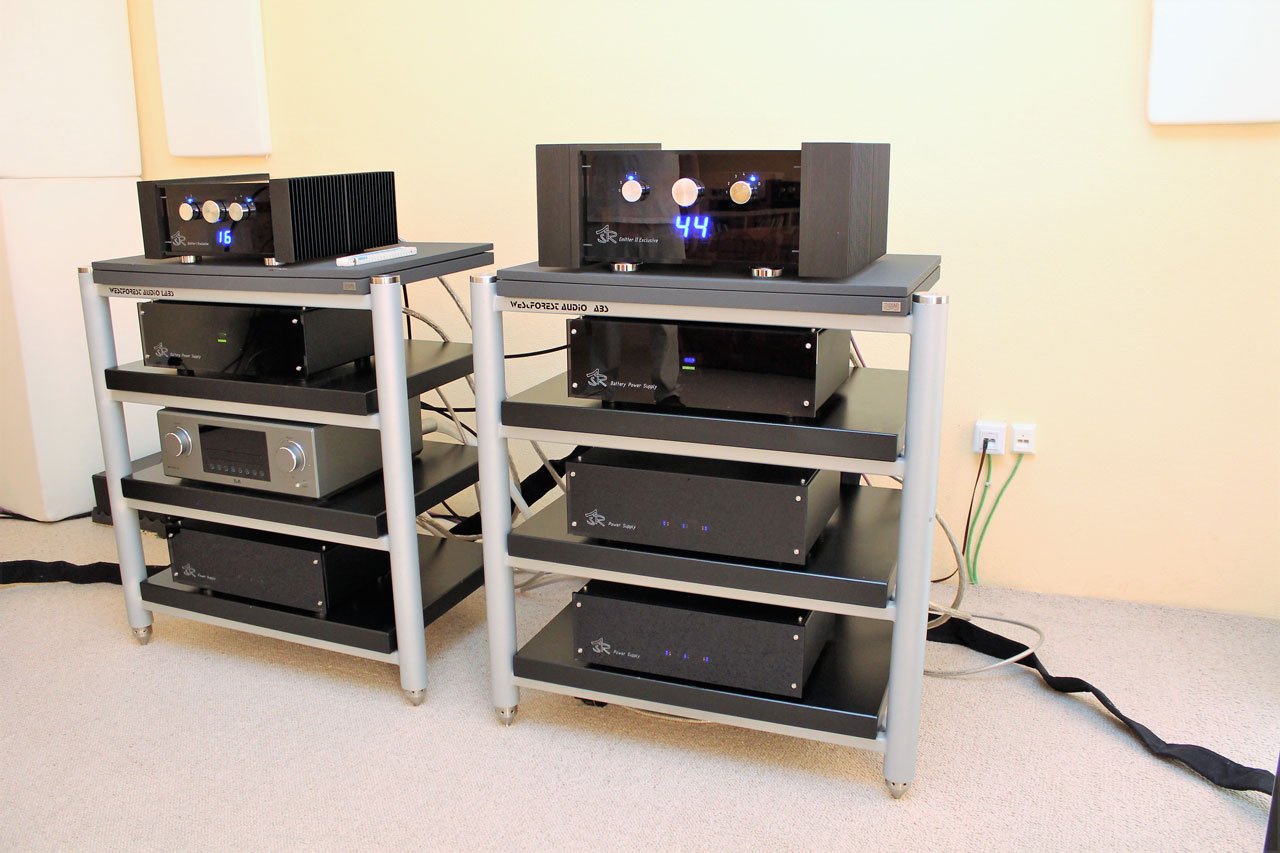 Top left Emitter I, top right Emitter 2, each in Exclusive guise. The matching power supplies live further down, source is T+A's MP 3100 HV.
Top left Emitter I, top right Emitter 2, each in Exclusive guise. The matching power supplies live further down, source is T+A's MP 3100 HV.
Anyone believing themselves out of any such multi-chassis trouble with the smaller Emitter I is wrong. In Exclusive guise this version too gets an extra battery pack to occupy three shelves in your hifi rack. Of course Friedrich Schäfer appreciates that his immodest space requirements don't meet with global applause. But to be an ASR Emitter, this is what's required. A not insignificant part of its magic lies in the complex power supply. I can only congratulate the ASR boss on his unwavering fortitude. Such authentic uncompromising solutions are exactly what gives the top HighEnd its special appeal and puts a full stop to arbitrary interchangeability. Speaking of interchangeability: being able to customize our ASR amplifier is another aspect of the firm's philosophy. Do you need additional high-level inputs, a second speaker or headphone output? No problem. Neither are different design variants. If desired, there's clear-anodized heat sinking, clear acrylic or a different display color. My favorite is this combination of silver heatsinks and blue display.
 An Emitter I with clear acrylic.
An Emitter I with clear acrylic.
Before we tour the production facilities, a word on sustainability. According to Friedrich Schäfer, the vast majority of all ASR amps ever produced still play flawlessly today. After 30 or 40 years of operation, one or the other part can obviously quit. No drama. Almost all ASR amplifiers can be repaired at the factory. Frequently even innovations from subsequent iterations may be retrofitted to perform better than new. If it's no longer possible to repair very early treasures because after so many decades key parts have become unobtainium, the ASR team will try to find an economically sensible solution for the owner. If needed, ASR won't hesitate to provide original circuit diagrams. It's not often that one meets such openness and transparency in an industry with often justified if sometimes also exaggerated concerns over plagiarism and carbon copies.
 Power supply with cut-core Philbert transformers.
Power supply with cut-core Philbert transformers.
Such concerns only elicit a mild smile from Friedrich Schäfer who views being copied by Asia as the highest compliment. ASR Audio Systeme sell about 30% of their output there. Another 15% each go to the USA and the rest of the world, a good 40% sell domestically. While international trade takes place via local distributors and dealers, ASR decide back in 2019 to serve Germany only via direct sales. One of the reasons is that domestic retailers find it increasingly difficult to convince customers of the advantages of multi-box integrateds. Big and heavy no longer is trendy. Also, direct sales keep prices within reasonable understandable limits. Optimized advice and greater customer proximity are further benefits. In the end, everyone is satisfied with this step.
 An Emitter I motherboard awaiting population.
An Emitter I motherboard awaiting population.
Under "Emitter at Home", those interested can borrow an ASR amp of their choice for a fortnight. Or they can get to know preferred candidates at the "Emitter Days" which ASR regularly organizes in Herborn; well, until the Corona pandemic. They hope to offer such events at their headquarters again soon. In addition anyone interested can reach Friedrich Schäfer and staff by telephone. Onsite, 10 employees including the boss handle the development, production, service and repair of ASR amplifiers. Most of them have been here for many years. Turnover is very low. In addition to obvious pride in manufacturing specialty products for a specialty market, I notice almost family-like interactions against all the obvious professionalism. The friendliness with which everyone greets me and later says goodbye isn't matter of course everywhere. Friedrich Schäfer explains that he values flat hierarchies and always tries to be approachable to all employees. He must do a few things right because a relaxed working atmosphere like the one here in Herborn is certainly not commonplace everywhere today.
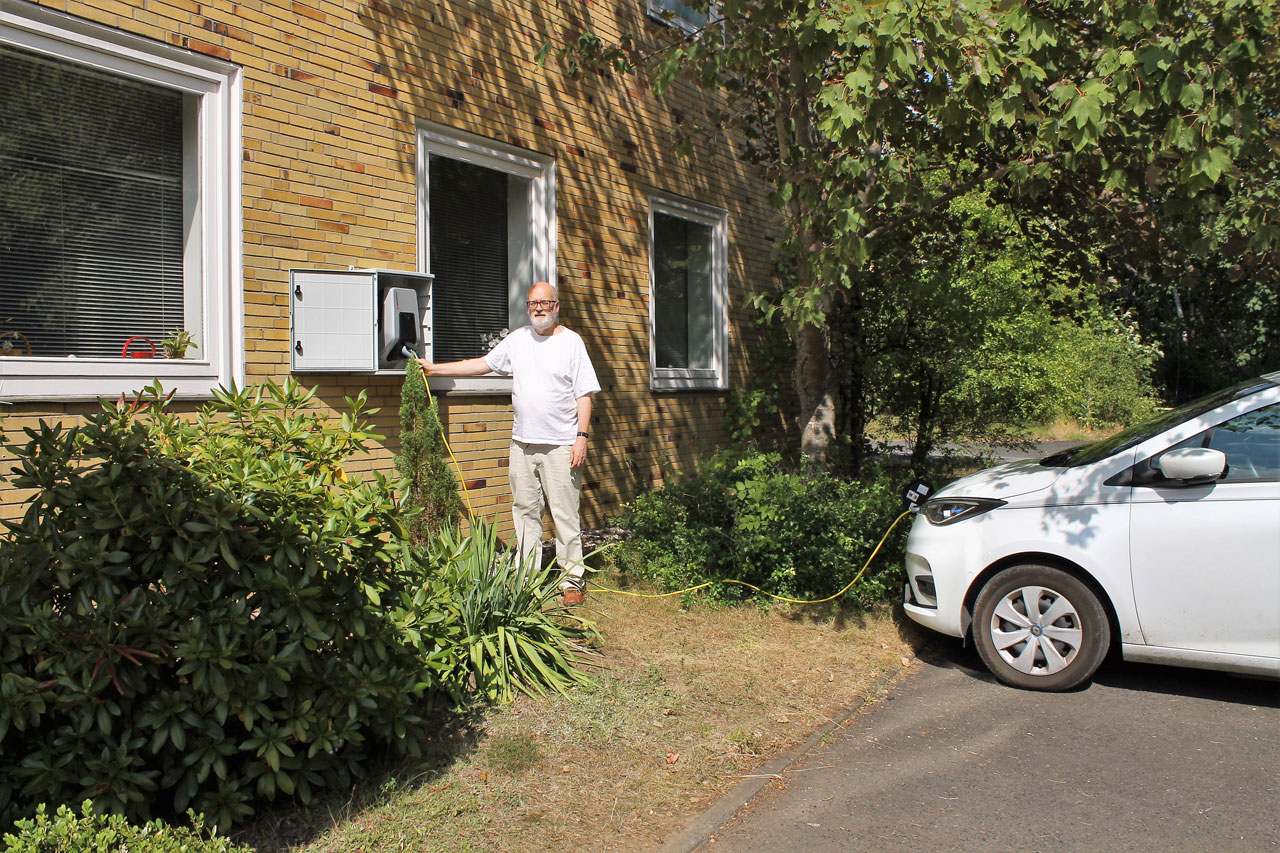 Another aspect of sustainability is Schäfer's enthusiasm for battery-powered automobiles.
Another aspect of sustainability is Schäfer's enthusiasm for battery-powered automobiles.
After the Bundeswehr decommissions the Herborner Aartal barracks in 1992, Friedrich Schäfer acquires the building eight years later. It's a more than 50-meter long three-storey fully functional building to suddenly give him ~2'000m² of floor space.
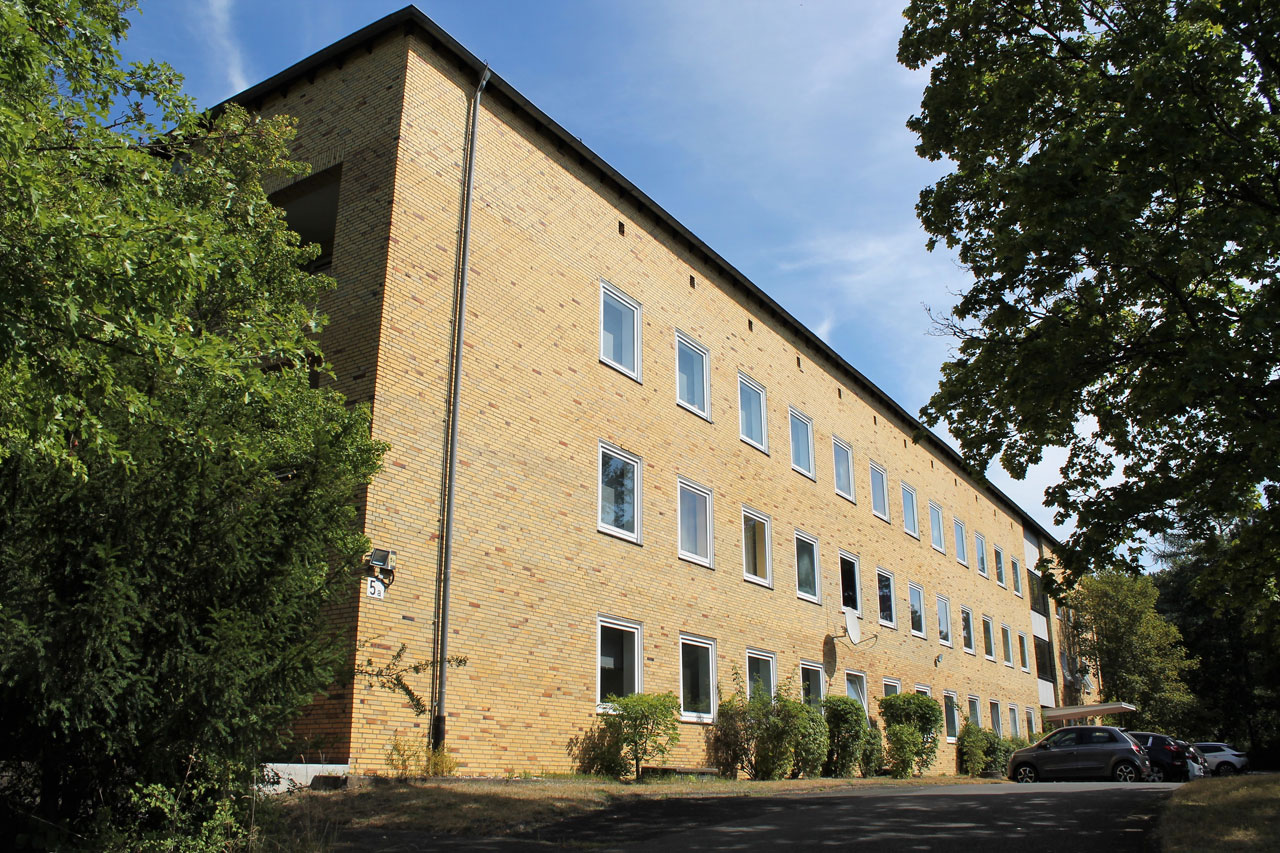 Perhaps not pretty but decidedly spacious and well-lit.
Perhaps not pretty but decidedly spacious and well-lit.
If the previous accommodations were rather more cramped, Schäfer's original vision of working with plenty of air, space, daylight and a view on the countryside is sudden reality. As far as possible, ASR works with regional suppliers. This applies to bare circuit boards and CNC'd acrylic chassis panels. ASR obtain their electronic components from all over the world. It's for nothing that the boss sometimes sits at the computer for very long times during the night chasing the most suitable part for a specific application.
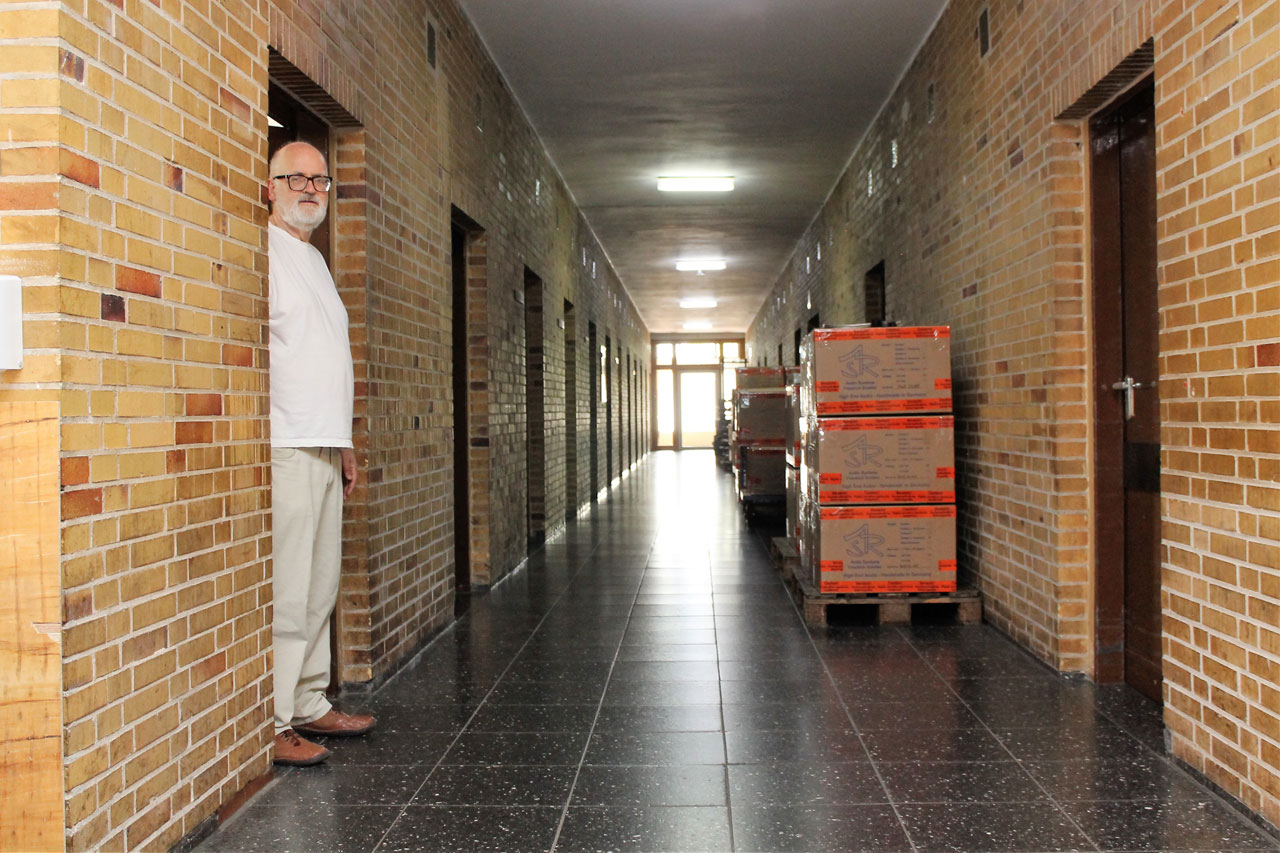 Long, longer, longest… the ASR corridor.
Long, longer, longest… the ASR corridor.
So it fills him with not a little pride that he has succeeded to source the special high-voltage capacitors in his amplifiers and even have them wear the ASR logo.
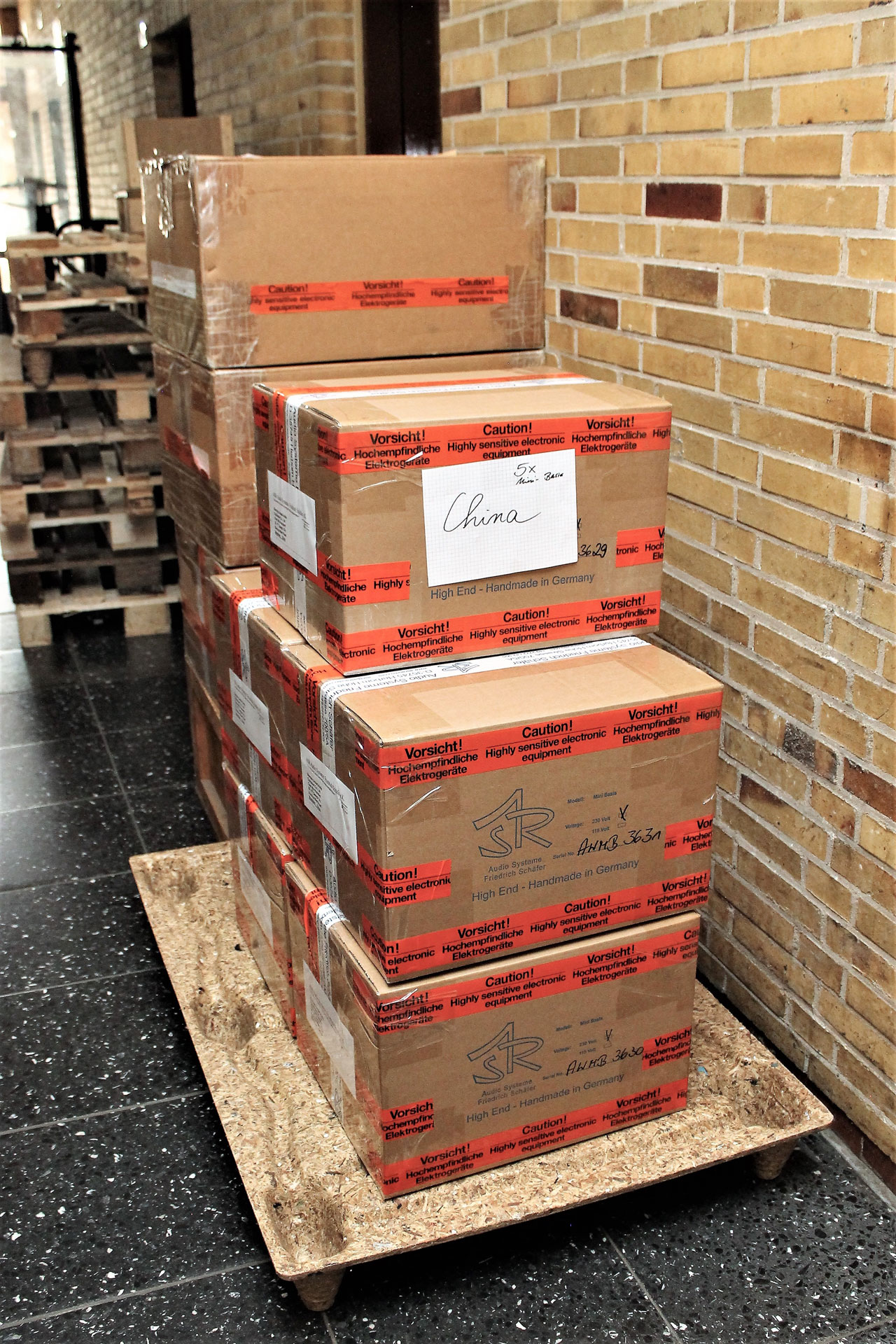 Forget Far-Eastern production; it's where this shipment is headed.
Forget Far-Eastern production; it's where this shipment is headed.
On the building's left sits a 50-meter long corridor. At the front are rooms for development, repairs and updates. The meticulous assembly of circuit boards also takes place here. At ASR Audio Systeme, this sensitive procedure is usually undertaken by the female contingent of the workforce so probably directly related to the special sensitivity the boss ascribes to the women who work here. Once the required boards are completed, they get measured and batched for subsequent install.
 All ASR electronics undergo extensive pre-conditioning and testing.
All ASR electronics undergo extensive pre-conditioning and testing.
As we walk through the rooms, older Emitter amplifiers, Basis phono stages or a rare Collector preamp catch my eye on the shelves. They await repair or overhaul. Some have remarkable histories. There's a defective Emitter which a customer in a hurry handed in without leaving phone number or address. The overhauled amp has awaited collection for almost ten years already. So if you miss an Emitter or know someone who does… you know where to find it. The rooms at the rear of the corridor are primarily for parts storage and packaging materials as well as finished boxes ready to ship. There's also an engraving machine to write on the acrylic plates. ASR could have outsourced this function but the required quality would always be problematic, never mind the gained flexibility for so many custom options.
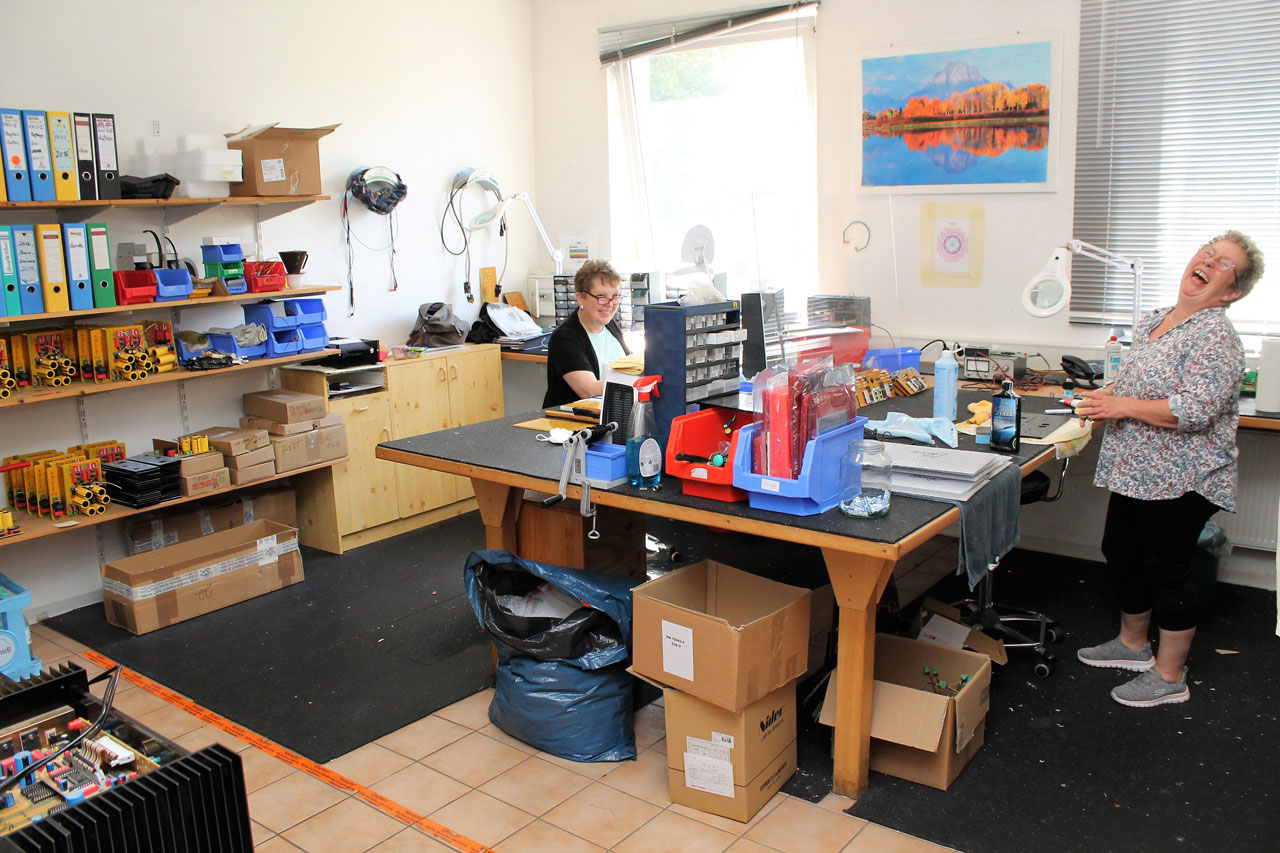 Frau Kati Welsch and Frau Maritta Liebl during assembly of a Mini Basis. Final cosmetic inspections too happen here.
Frau Kati Welsch and Frau Maritta Liebl during assembly of a Mini Basis. Final cosmetic inspections too happen here.
If you turn right behind the entrance, you get to final assembly. This is the realm of production manager Ingo Cuntz and colleague Udo Eckhard. It's said that in an emergency, both could assemble an Emitter or Basis blindfolded. Once they do—usually without blindfold—all ASR amplifiers and power supplies are put through their paces in a test lasting several days. Only when they successfully complete this obstacle course are they released into the hands of their new owners.
 The blind-flying duo with the boss.
The blind-flying duo with the boss.
Arriving on the second floor, Friedrich Schäfer proudly presents what is perhaps the most important room in his kingdom: the ASR listening lounge. It not only hosts demonstrations for customers or foreign distributors but all rehearsals of his latest circuit tweaks and modifications. He reports with a sly grin that one or the other night can go by quickly without any sleep. And who wouldn't want to be accidentally locked in here at day's end? ASR Emitters I and II stand by for duty. A T+A MP 3100 HV multi-source player serves as digital source, listeners with a vinyl affliction have a Transrotor Massimo, naturally in the sonically superior version of two motors. Phono gain is incumbent upon the well-known ASR Basis Exclusive HV. The WM-4 speakers from Essen's Fink team too are real eye-catchers and no more and or less than the reference speakers from world-renowned specialist Karl-Heinz Fink worth a good €40K. For connoisseurs they are veritable gems with an excellent price/performance ratio in the High End. The problem could be be finding more. Those with 15-inch woofers, two proprietary Fink flat-diaphragm midranges and AMT tweeter in a D'Appolito array are rare and sought after.
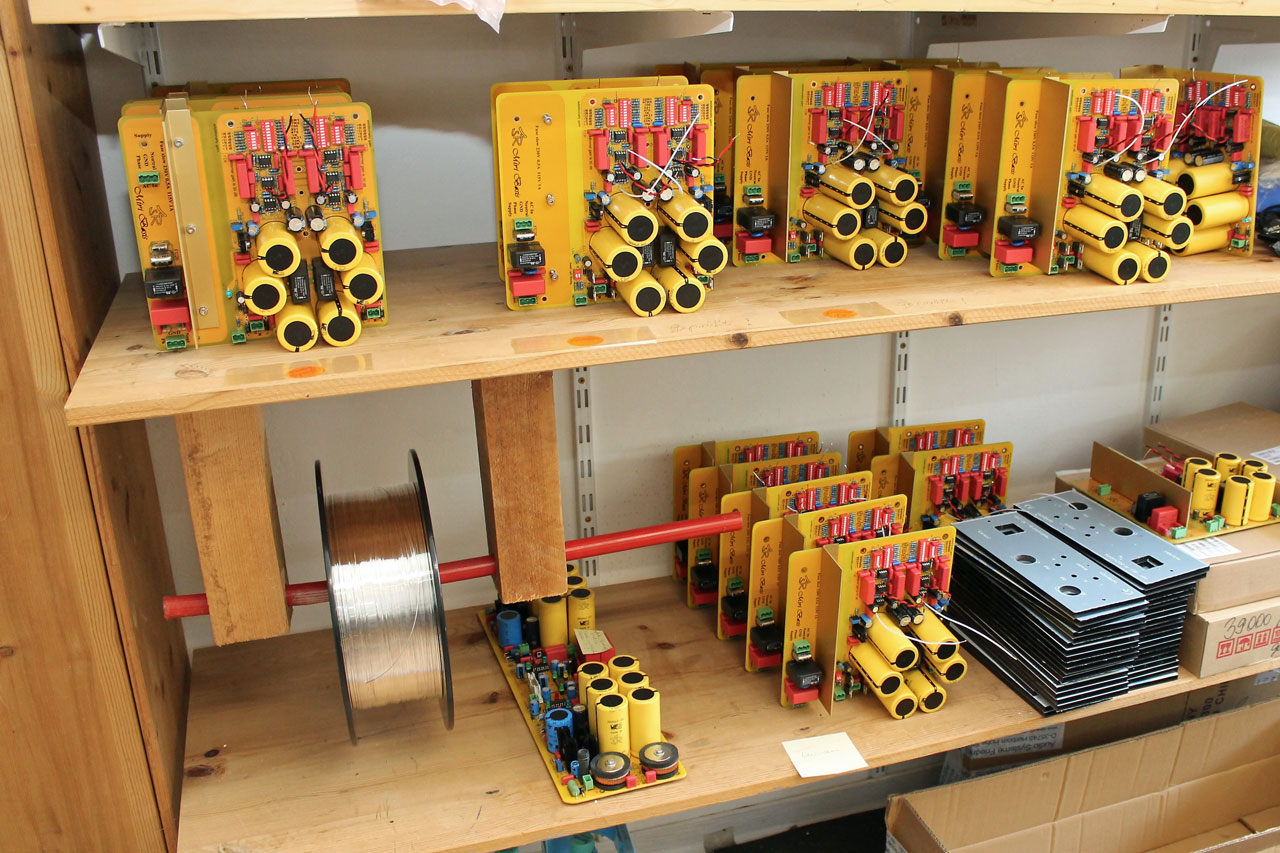 Postal-yellow high-voltage capacitors on Mini Basis Exclusive boards.
Postal-yellow high-voltage capacitors on Mini Basis Exclusive boards.
That's not without good reason as quickly becomes clear when the boss places a few well-known reference recordings on Massimo's heavy platter. Esther Ofarim's "Rataplan" from ATR's pressing of her solo album Esther not only sounds beguiling as usual but convinces with an exceptionally supple and realistic illustration which, if at all, I only know from absolutely top-class systems which usually cost more than some prime-location properties. Speaking of prime locations, they most likely don't involve the choo-choo train of "Stimela" from Hugh Masakela's Hope so often played at shows. Here realistic live volumes are really no problem. And if at the end of this dynamic audiophile banger some really nasty impulses knock out of the park, the ASR Emitter II shakes them not only hard but with such nonchalance out of its sleeve that every thought of possibly exaggerated energy is suddenly pulverized.
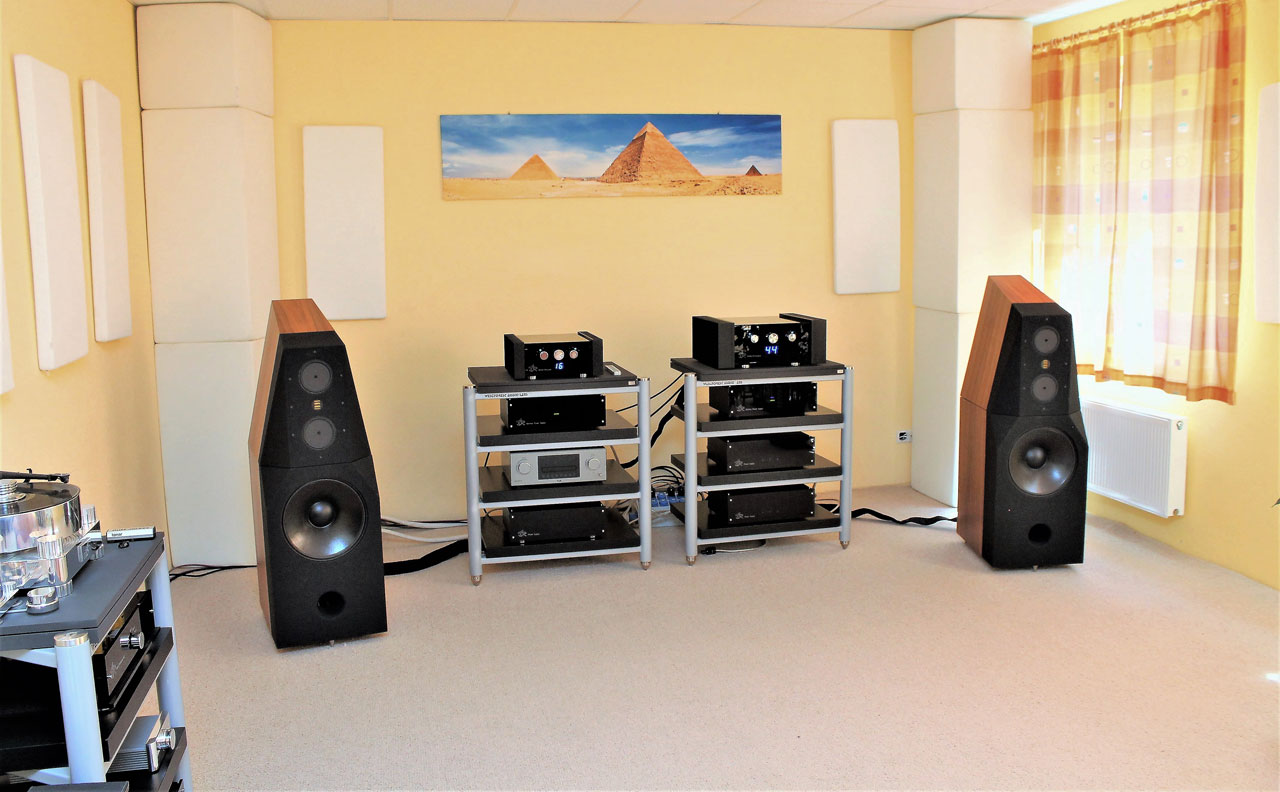
Bass power and outstanding dynamics are not the only qualities of ASR amplifiers. They celebrate the treble with finesse and the necessary precision but at the same time don't annoy with harsh hyper-analytical highs. The midrange is characterized by Friedrich Schäfer's signature so occasionally a touch of extra warmth which feels pretty real with the high-resolution WM-4. On the right software it causes plenty of goosebumps. On my return journey I have time for concluding thoughts. Alone in the car, the summary of my visit springs to mind almost automatically.
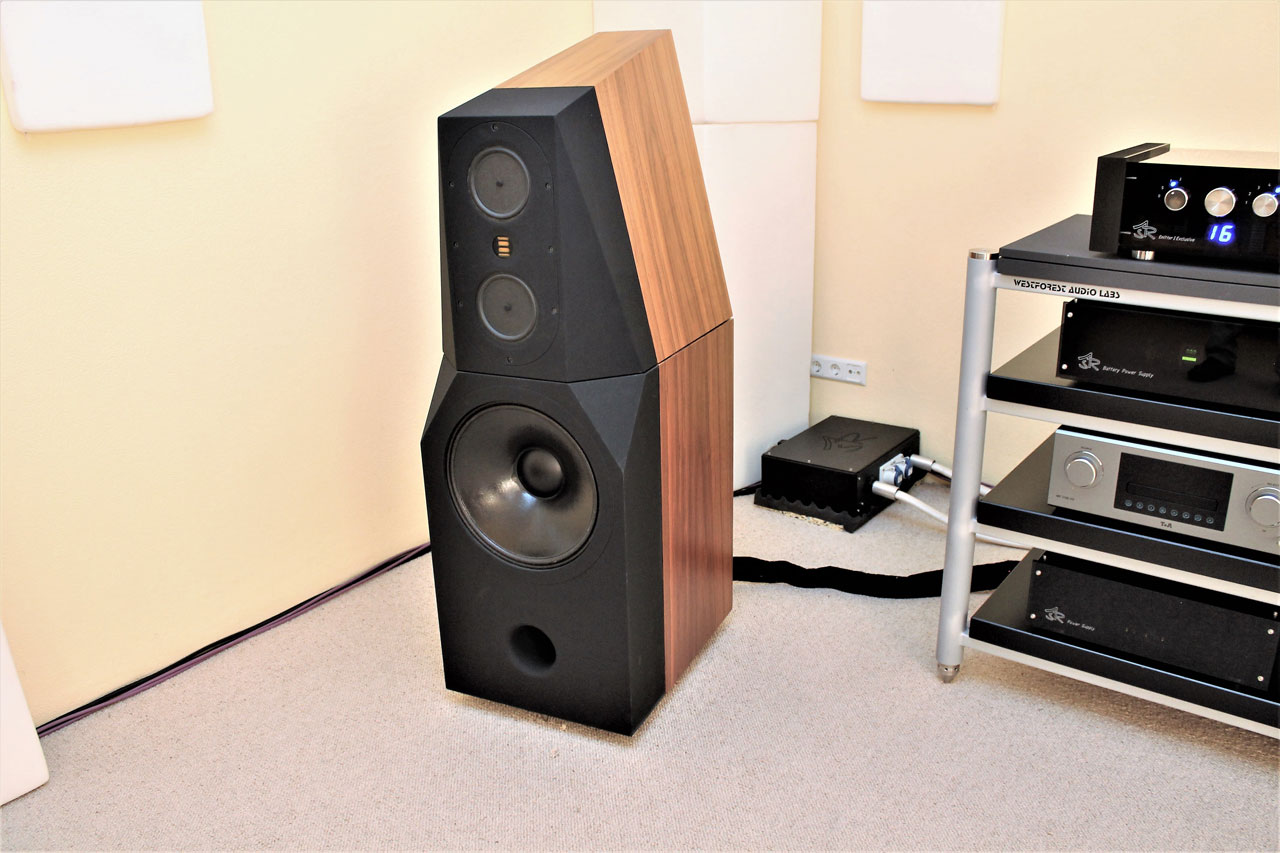
I just met a company boss who's gone his own way undeterred for decades already and continues to do so. Visionary and equipped with an obviously immovable inner compass, it's kept him and his company on course through good times and bad. He's a designer who pursues 'his' sound and the idea on what the most appropriate technical implementation for that is as consistently as possible and does not pander to changes in Zeitgeist or mainstream acceptance. The concomitant authenticity rubs off on the working environment but above all on high-fidelity products that appear strikingly independent.
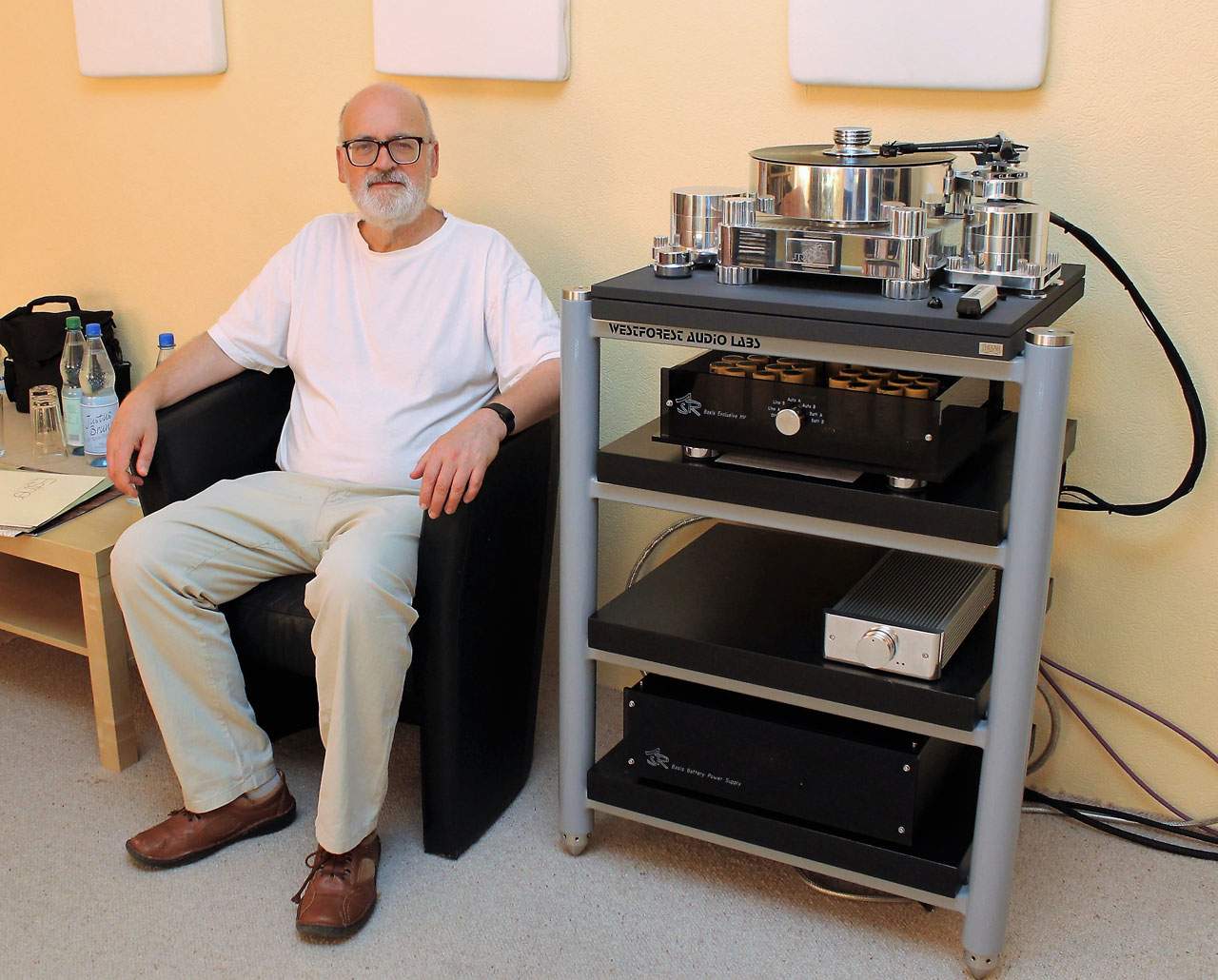
Do Friedrich Schäfer's amplifiers have what it takes to one day become icons? Or are they iconic already? I think you now know the answer to that…
ASR Audio Systeme website